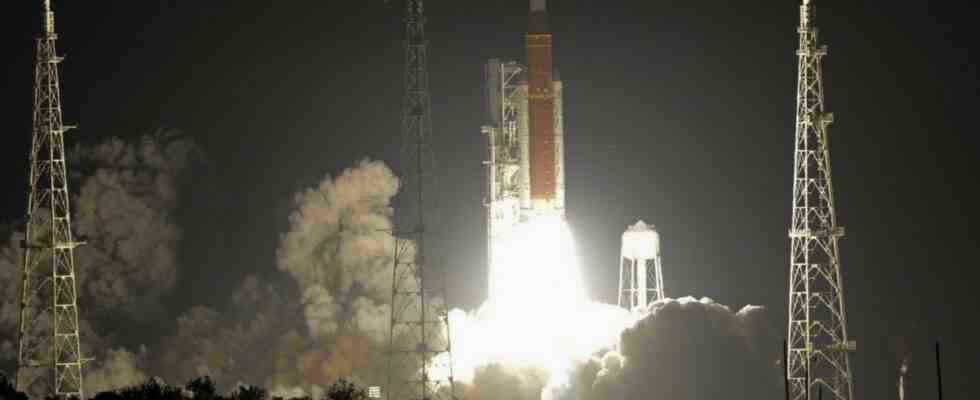Rocket launches are among the loudest audible noises in the world. A research team has now examined the volume of the most powerful rocket launched to date: the launch of the launch vehicle SLS during the Artemis 1 moon mission in mid-November last year, it generated 136 decibels at a distance of 1.5 kilometers. That corresponds roughly to the volume of a jet plane taking off a few meters away.
Even 3.2 miles from the launch pad, it still measured 129 decibels, more than a chainsaw or jackhammer would typically produce, according to researchers at Brigham Young University (BYU) and Rollins College in the journal JASA Express Letters to report. The value was almost 20 decibels higher than that predicted in a noise model. “This suggests that the models need to be reviewed and likely revised,” said co-author Grant Hart of BYU.
After the launch of a Saturn V rocket, grass is said to have caught fire in the distance
The research team had taken noise measurements at various locations around the Kennedy Space Center during the launch. The study is intended to help investigate the impact of rocket launches on the environment. It was initially unclear how loud it was directly at the launch pad. According to an earlier analysis by Brigham Young University, when a Saturn V– Rocket at the ramp once reached about 203 to 204 decibels. The new Space Launch System (SLS) had 13 percent more thrust than one in mid-November Saturn V ever, as stated in a statement on the current analysis.
To the Saturn V-Starts are therefore entwined with many myths. There are erroneous reports of molten concrete and distant grass fires as a result of the immense noise. Should there have been such incidents, they are more likely to be attributed to the radiant heat of the exhaust plume.
Around 125 decibels is considered the limit above which people suffer physical pain. The perception of loudness is not linear: According to experts, ten decibels more feels about twice as loud for people.
The Artemis program consists of several missions. The first, Artemis 1, has already been largely completed successfully. On December 11, 2022, the unmanned capsule of the spacecraft landed Orion after orbiting the moon in the Pacific. The Launcher SLS has four liquid hydrogen-oxygen main engines and two solid boosters. According to the researchers, the latter are probably the main source of the noise level of the launch.
Many of the loudest sounds ever come from bombs releasing extreme energy. Perhaps the loudest sound ever recorded may have been the Krakatoa volcano erupting in 1883. At the time, the explosion could be heard 3,000 kilometers away in Perth on Australia’s west coast. It largely destroyed the mountain and its island and triggered a tsunami that killed at least 36,000 people. According to NASA, a volume of 180 decibels was still measured at a distance of 160 kilometers. Therefore, it is estimated that the value on site was over 300 decibels.

